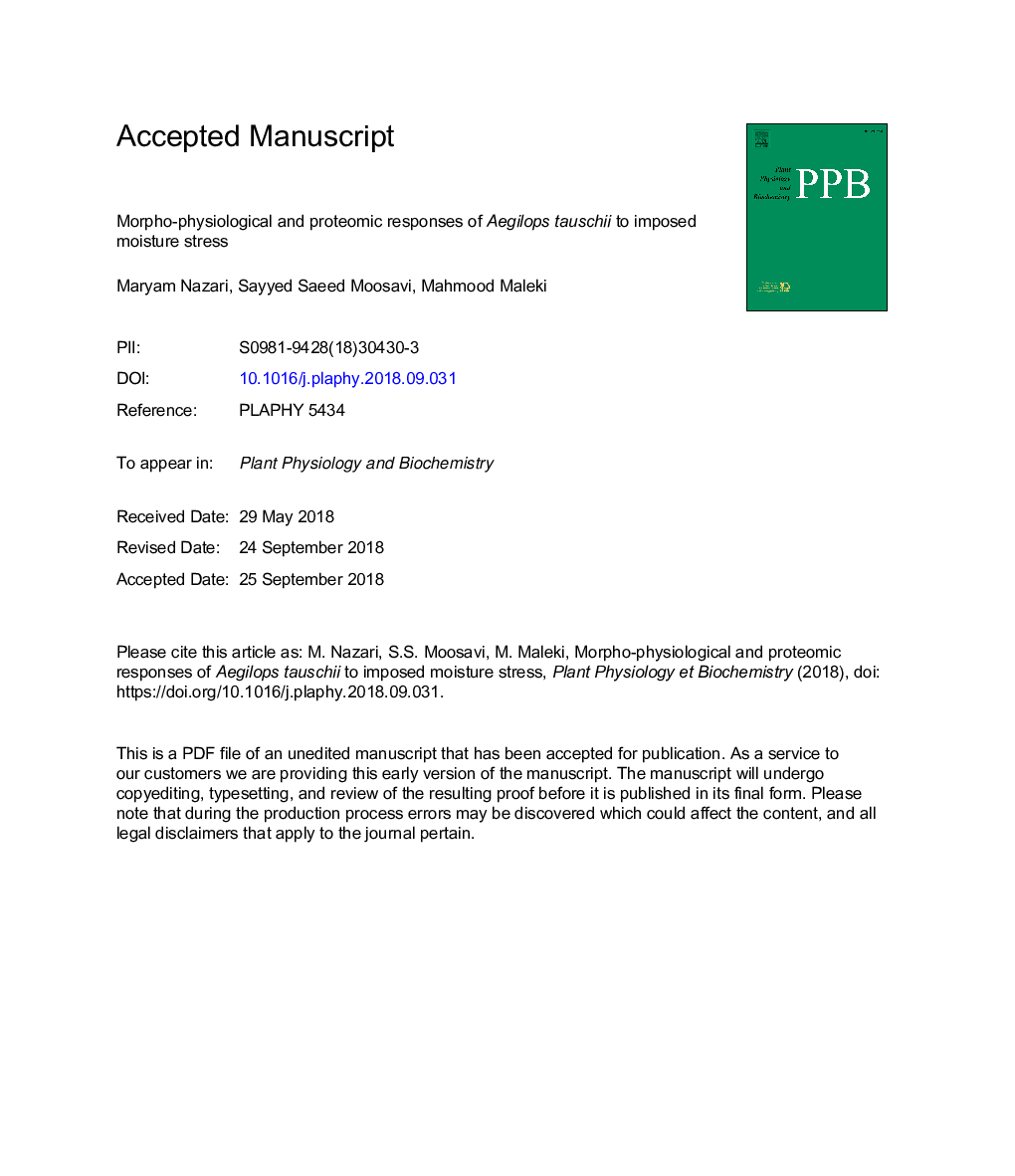| Article ID | Journal | Published Year | Pages | File Type |
|---|---|---|---|---|
| 11030891 | Plant Physiology and Biochemistry | 2018 | 22 Pages |
Abstract
Moisture stress is the most important limitation of wheat production in the worldwide. Among the tribe Triticeae, Aegilops tauschii is one of the most valuable gene sources of resistance to abiotic stresses. In order to identify the most tolerant accession to moisture stress, and to understand its adaptive mechanisms at the molecular level, the present experiment was carried out on ten Ae. tauschii accessions under normal (95% soil pot capacity) and moisture stress (45% soil pot capacity) conditions. At the start of the heading time, the expanded flag leaves of treated and untreated plants were sampled for two-dimensional electrophoresis (2-DE) based on proteomics approach. A19 accession was less affected by the imposed moisture stress; therefore, it was used for the proteomics experiment. Among 252 protein spots which were reproducibly detected in each given 2-DE gels, 25 spots showed significant differences between the two moisture treatments; 17 spots were upregulated and 8 spots were downregulated. The identified proteins by MALDI-TOF/TOF, were allocated to seven functional protein groups, which were mainly involved in photosynthesis/respiration (28.5%), carbohydrate metabolism (14.2%), energy metabolism (7.1%), chaperone (14.2%), protein translation and processing (14.2%), repair and stability of the genome (7.1%) and unknown function (14.2%). We report this for the first time that RMI2 protein (in the group of repair and stability of the genome) was significantly changed in wheat in response to moisture stress. We believe that, the identified proteins could play important roles in acclimation and tolerance to moisture stress and provide the genetic pathways for improving tolerance to moisture stress in wheat.
Related Topics
Life Sciences
Agricultural and Biological Sciences
Plant Science
Authors
Maryam Nazari, Sayyed Saeed Moosavi, Mahmood Maleki,
